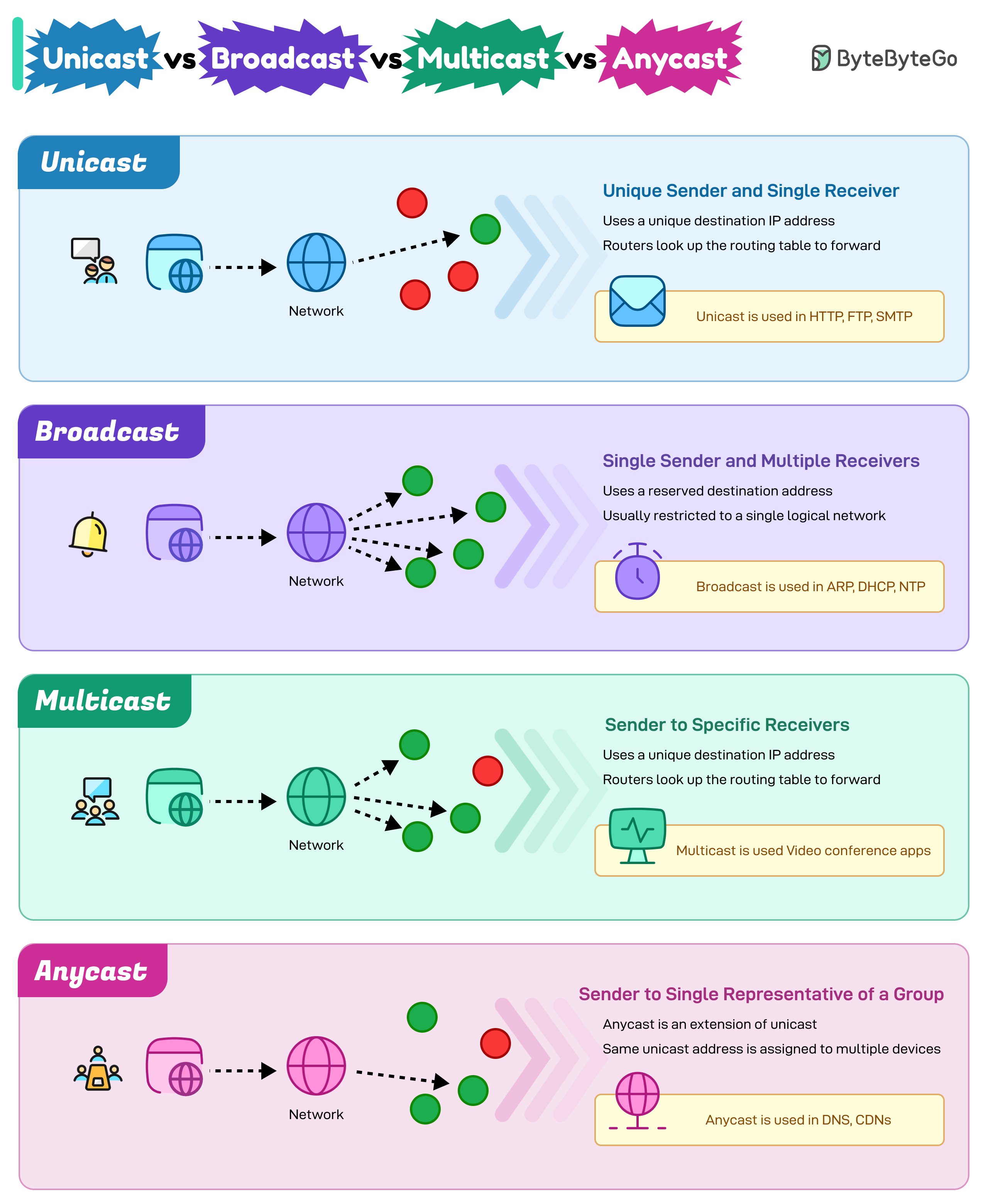Understand the differences between unicast, broadcast, multicast, and anycast.

These are 4 network communication methods you must know.
Unicast
Unique sender and a single receiver.
For example, communication between two people in a party.
Used in protocols such as HTTP, FTP, and SMTP.
Broadcast
Single sender and multiple receivers.
For example, a person at a party stands up on a podium and shouts a message to everyone. However, it doesn’t mean that every receiver gets the message.
Used in Address Resolution Protocol, DHCP, and NTP
Multicast
Sender to a specific group of devices in a network. This is a specialized case of broadcast routing.
For example, a member of the group talks and listens to other members of the group within a party.
Used in IPTV and video conference applications.
Anycast
Sender to a single device or a specific group of devices.
For example, saying thank you to one host out of a group of hosts organizing a party. All other hosts also expected to receive the thank you note.
Used in DNS querying and CDNs.